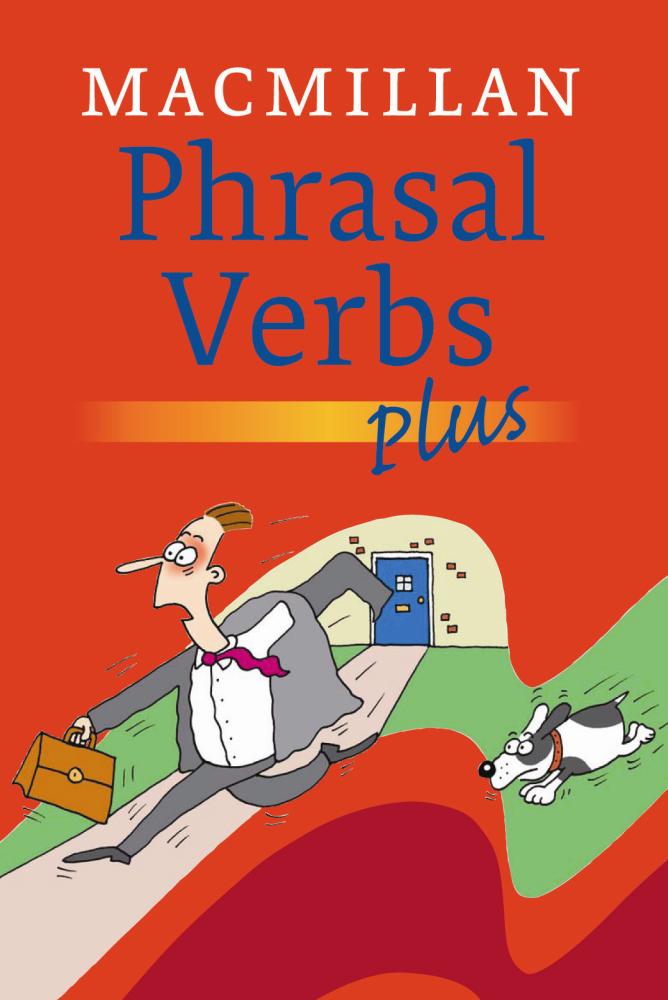

Macmillan Phrasal Verbs Plus

As well as explaining the meaning and use of phrasal verbs in English, this dictionary has a wealth of additional features.
Encouraging natural English
This two-colour dictionary is designed to help learners deal confidently with one of the most challenging but essential areas of English. As well as explaining the meaning and use of phrasal verbs, the many unique features are there to help you develop more natural-sounding English:
Red words
Using data from our large language corpus, we have identified just over 1,000 of the most frequently used phrasal verbs in English, and dealt with them in great detail. These words are shown in red and are divided into three bands (marked with one, two or three stars), each of about 350 verbs. We have used the same approach in the Macmillan English Dictionary and Macmillan Essential Dictionary, and students and teachers have told us how useful this information is.
Menus
In entries with five or more senses, a menu at the top of the entry guides you quickly to the meaning you want. No more wading through long entries until you find your meaning.
Collocation boxes
Boxes at the end of some entries provide invaluable information about the words phrasal verbs typically occur with, to help you speak and write more naturally. Frequent collocations are also shown in examples and highlighted in bold type.
Particles
Special entries on the 12 most common particles (away, back, down, out etc) explain how they contribute to the meaning of phrasal verbs.
Click here for an example of a particle entry:
Common Particles chart
Common Particles diagram
Single-word index
An index of over 1000 single-word equivalents lets you find phrasal verbs by starting with single-word verbs which you already know. The equivalent phrasal verb may be more common and therefore may sound more natural.
Illustrations
Over 100 striking two-colour cartoons by Martin Shovel illustrate common phrasal verbs, reinforcing their meaning and making them more memorable.
Extra information within the entries
The dictionary entries themselves contain a wealth of information to help you understand each phrasal verb and to use it well:
- Meanings are explained using simple language (a vocabulary of around 2,300 words), with easy-to-use descriptions of how phrasal verbs combine with other words, where the object can be placed, where the pronouns go, along with additional information on inflections, pronunciation and stress patterns.
- Example sentences taken from the corpus accompany the definitions, reflecting phrasal verbs as they are used today.
- The dictionary provides guidance on register (formal, humorous, impolite, informal, literary, offensive, old-fashioned or showing disapproval) and regional usage (British or American).
- Synonyms and opposites are given at the end of entries, and show if the alternative word should be used in a different context (e.g. if it is a more formal alternative to the headword).
- A subject label is included if the phrasal verb is used as part of the language of a particular subject area, rather than in everyday English. These labels indicate the use of the phrasal verb in business, Internet, computing, economics, health, linguistics and technical contexts.
- Derivatives of the phrasal verb (nouns, adjectives and adverbs) are shown at the end of the entry and help you build your vocabulary.
Click to see these features on two sample pages from the Macmillan Phrasal Verbs Plus.
Language Study pages
A 26-page Language Study section in the middle of the dictionary contains information written by experts on a range of relevant topics:
- The Syntactic Behaviour of Phrasal Verbs: how phrasal verbs combine with other words in a sentence
- Metaphor and Phrasal Verbs: ways in which different phrasal verbs share similar metaphors Sample page
- Phrasal Verbs and Other ‘Phrasal’ Vocabulary: the ways in which verbs, nouns and adjectives combine with particles to make new word forms
- Register and Phrasal Verbs: what types of text phrasal verbs are typically used in Sample page
- Learners and Phrasal Verbs: the most common problems experienced by learners using phrasal verbs
- Pronunciation and Phrasal Verbs: how phrasal verbs are pronounced and where the stress falls
- ‘New’ Phrasal Verbs: the ways in which new phrasal verbs develop Sample page
Nivel: Intermediate to Advanced
ISBN code: 9781405063906
Editorial: Macmillan Publishers







